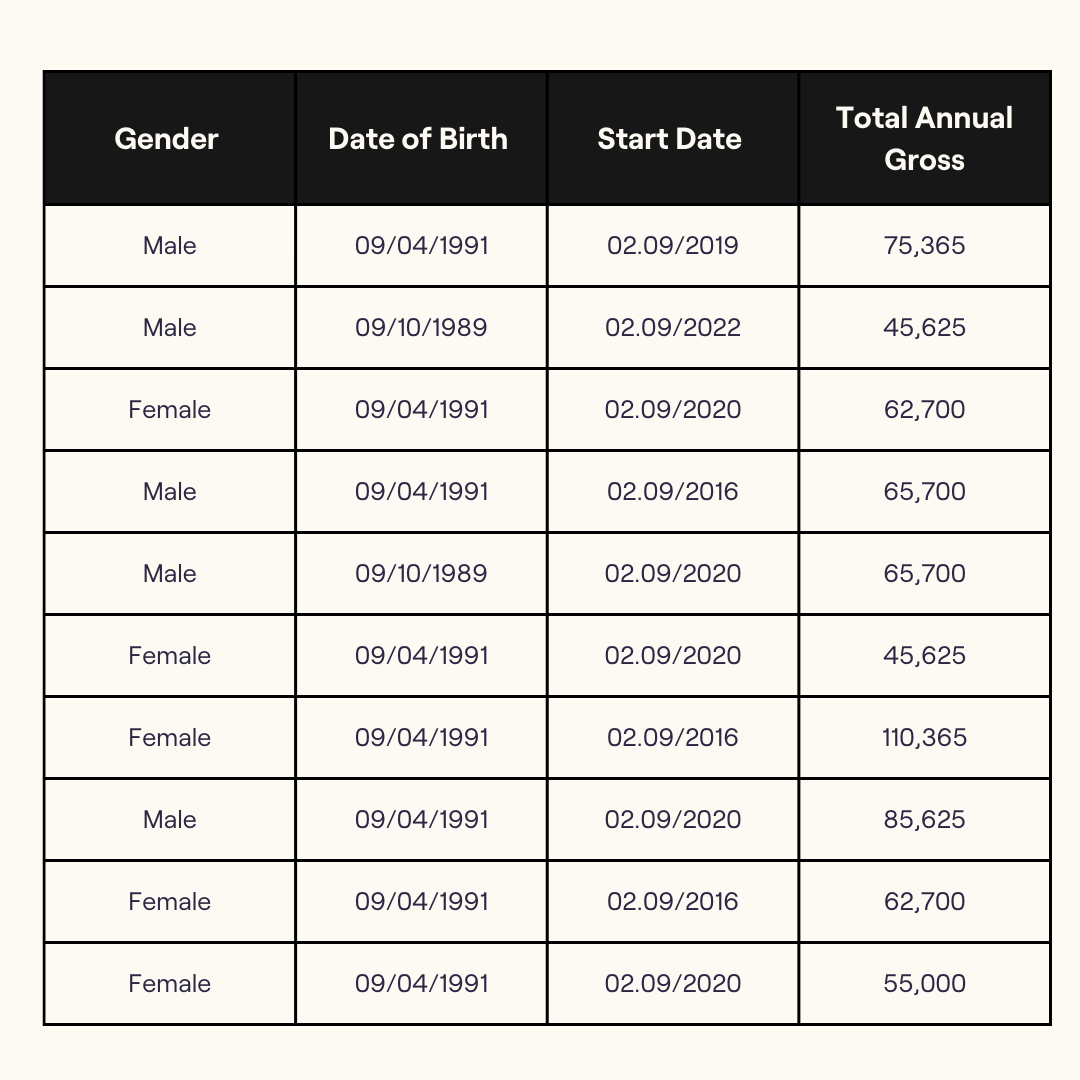4 min. read
EU Pay Transparency Directive 2026: What to know
Xena’s Guide on preparing EU companies for Pay Equity
The EU Pay Transparency Directive entered into force on 6 June 2023 and is expected to be translated into national law by member states by 2026.
The gender pay gap in Europe currently hovers at approximately 13%, on average, according to the European Council, and the absence of pay transparency is a significant barrier to righting this inequity.
So how do you start preparing for the inevitable?
Allow us to share some advice on proactively preparing for transparent equity initiatives and ensuring your administration is in order.
Timelines

In the first stage (2027), employers with at least 250 employees must report annually, and employers with between 150 and 249 employees will have to report every three years. The threshold will then be lowered to just 100 employees, and these smaller employers will also have to report gender pay gaps every three years beginning with reports published in 2031 relating to the 2030 calendar year. Employers with fewer than 100 employees do not need to report, but may do so voluntarily.
The Directive will include an obligation to report the pay gaps to employees and provide the report to an authority.
In a nutshell:
– Employers with 100 or more employees must report on their gender pay gaps every year in every EU country. They must also make public certain information related to gender pay gaps and pay levels at job interviews.
– The regulations mandate that HR leaders, on behalf of their employers, must disclose the starting salary or pay range for advertised positions to job seekers, either within the job posting or before the interview process. Additionally, employers are prohibited from inquiring about candidates’ pay history.
– Once hired, workers have the right to request average pay rates, categorized by gender, for employees performing comparable work of similar value to their own. They also are entitled to proof of criteria utilized for determining pay and career advancement.
– Pay differences must be based on legitimate and objective criteria unrelated to gender, such as individual competence and performance.
– Pay gaps exceeding 5% that cannot be explained by legitimate factors, would mean employers will have to conduct a joint pay assessment with employees’ representatives and develop an action plan.
– To evaluate and compare employees in similar roles, employers can consider criteria such as education, professional and training requirements, skills, effort, responsibilities, and the nature of work.
– Employees may request, and employers will have to provide, the mean pay levels by gender for categories of workers performing similar work.
– Employers will have to provide their employees with the business-related, legitimate criteria used to make decisions on pay and career progression.
– Employers should provide increased transparency for employees in understanding existing pay levels and visibility of pay ranges for job seekers.

Types of Pay Gaps
Remember the ‘legitimate factors’ we mentioned you’d need to explain pay gaps of more than 5%? Allow us to elaborate.
Raw pay gap = Explained pay gap + Unexplained pay gap
Raw Pay Gap: How the average or median pay gap difference between men or women
Explained Pay Gap: How pay differs between men and women in different accounts of market experience etc.
Unexplained Pay Gap: Residual pay gap that cannot be explained and may be due to pay inequalities.
Unexplained pay gaps are areas of potential bias in pay policies and practices, which should be identified through a regression analysis and mediated, in the short term, through pay adjustments. In the longer term, these should be addressed through a thorough review of policies and practices that affect pay decisions.
On the other hand, explained gaps include differences in experiences, skills, roles and access to career opportunities. These can be identified through pay driver analysis and further explored through deeper workforce analytics, or Internal Labour Market Maps.

Where To Start
1. Analyse your pay gap and take corrective actions. Carry out a thorough equal pay review to identify any potential gender pay gap and take corrective action where necessary. Read our guide on analyzing your pay gap: where to start
2. Review your job architecture and pay structure. Having an up-to-date and accurate job architecture lays the foundation for a fair and transparent pay system in which roles and responsibilities are reflected correctly and based on objective criteria. What type of initiatives do you have internally that are fairly assessing prospective employees? A useful guide here on creating an interview scorecard for software engineers or using job families to flesh out your job architecture for tech teams.
3. Assess and review your policies regarding Diversity, Equity, and Inclusion. Examining policies and procedures in recruitment, performance management, promotion, and compensation is key to ensure they are unbiased and equitable. The improvement of these policies can foster a culture of fairness and equality, which will help attracting and retaining top talents. Consider what type of benefits or flexibility do you offer parents in the workplace, or offering part-time work or job sharing to reduce your pay gap.
4. Raise awareness by training Management and People leaders. Providing training on DEI policies in place and unconscious bias helps raising awareness and ensuring hiring managers and People teams apply the standards and foster a culture which promotes equal opportunities for all.
5. All hands on deck. A gender pay audit will require someone to compile the data and do the statistical analysis. Be sure you’ve identified who this individual contributor will be before starting the process. We recommend this work be done by a member of your company’s analytics, data science, or finance team who has some experience with regression analysis and statistical software.
Getting closer to the types of pay gaps at your company, will also enable you to identify areas of improvement.

It’s essential to set up a committee that with steer your audit and ensure fairness and legitimacy.
Developing business structures that support DEI, Employer Branding, Benefits or inclusive hiring practices will require thoughtful and intentional buy-in from your senior stakeholders. Read our 4-step plan on addressing DEI with your stakeholders to get started.
The EU Equal Pay Directive goes beyond the monitoring of equal pay and includes a series of binding measures.
Initiating plans to ensure a seamless transition is key, and those who proactively demonstrate commitment and tackle the issue will be best positioned.




